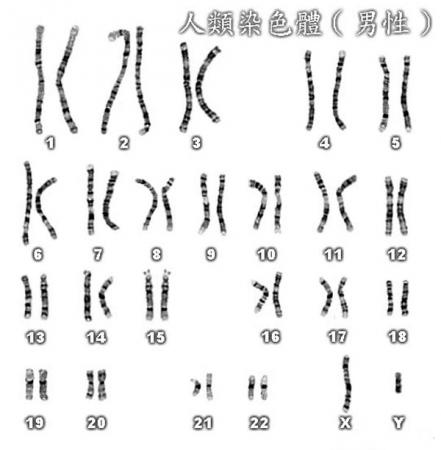摘要:美国加州大学遗传学小组报道:非洲土著人群男性染色体17号位点与前列腺癌发病有关。研究对象是非裔美国人,3425个前列腺癌患者和3290个正常人的基因组比对分析后发现:ZNF652编码基因的内含子缺失突变与前列腺癌有关。不是非裔的人群,这一缺少突变概率还不到1 %。

男性全部基因组
A University of Southern California-led group reports in Nature Genetics that it has identified a chromosome 17 locus linked to prostate cancer risk in men of African descent. Through a genome-wide association study involving 3,425 African-America men with prostate cancer and another 3,290 African-American men who did not have the disease — along with follow-up studies involving thousands more affected and unaffected men of African descent — the team found significant ties between prostate cancer and a variant falling in an intron of a transcription factor gene called ZNF652. The variant is rare in non-African populations, researchers explained, turning up in less than 1 percent of these individuals. In contrast, the risk variant was detected in roughly 5 percent of men of African ancestry.
"We detected a marker of risk for prostate cancer that appears specific to men of African descent, who have an increased incidence and mortality of this disease," lead author Christopher Haiman, a preventative medicine researcher at USC, and co-authors wrote. "These findings provide strong support for conducting GWAS in diverse populations to identify markers of risk that may be population specific and which could contribute to racial and ethnic disparities in disease incidence."
In Nature Biotechnology , meanwhile, researchers describe how they created a synthetic version of the human peptidome using a T7- phage display library that contains hundreds of thousands of overlapping peptides, each a few dozen residues long. The group showed that they could track down autoantibodies, antibodies made using antigens that target an individual's own proteins, using this new proteomic resource in combination with a sequencing technique that they call "phage immunoprecipitation sequencing," or PhIP-Seq. And, they say, the strategy has other applications as well, since it can unearth previously unappreciated peptide-protein interactions.
In the early, online version of Proceedings of the National Academy of Sciences , researchers from the US and UK report that they have found and characterized a dog virus that's more genetically similar to the hepatitis C virus than any found before, even in non-human primates. The team detected the HCV homolog, dubbed "canine hepacivirus," or CHV, while doing high-throughput Roche 454 sequencing of samples collected during a respiratory disease outbreak in dogs. Their subsequent bioinformatic, phylogenetic, and genome sequence analyses support the notion that CHV is closely related to the hepatitis C virus, sharing a common ancestor within the human virus within the past 500 to 1,000 years.
"The identification and characterization of CHV signals the advent of a new tractable animal model for hepatitis C," senior author Ian Lipkin, director of the Columbia University Mailman School of Public Health's Center for Infection and Immunity, said in a statement. "This discovery provides new tools for understanding how this virus causes disease, and will facilitate drug and vaccine research and development."
In another PNAS paper, a research group led by investigators at the National Institute of Allergy and Infectious Diseases discuss findings from their effort to follow proteomic patterns in the parasite Brugia malayi representing different stages of mammalian infection. Using mass spectrometry, the researchers characterized and compared proteomic profiles for B. malayi in adult male and female parasites and in parasites from earlier developmental stages. The work is expected to provide insights into everything from the lymphatic filariasis-causing parasite's biology to its infection strategies. The analyses also provide a peek at the proteome of Wolbachia , an endosymbiotic bacteria living inside B. malayi .
"The library of stage-specific polypeptides now allows expansion to high-resolution surveys of metabolic or regulatory pathways, and thus the binary interaction networks that will help in understanding host-parasite interactions," senior author Thomas Nutman, deputy chief of NIAID's laboratory of parasitic diseases, and co-authors wrote.







